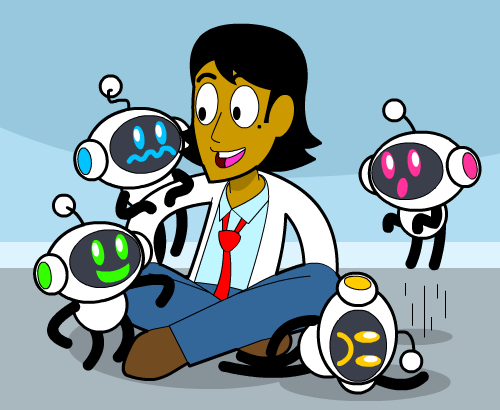Today, I’ve been spending time with a robot we recently created called “Robert.” Our team originally designed Robert to work in factories, putting parts of machines together. That was quite simple because we just created a program that told the robot how to move, pick up objects, and put them together. This worked well, and our robot became a successful worker.
After some time, we wanted Robert to solve problems on its own. We put data into a new program, which became the robot’s “brain.” Then, the robot was able to collect new information and compare it to the data in its brain. It could then decide the meaning of the new information and choose a suitable action. This activity is similar to how humans solve problems. For example, if I see my child crying, I decide to give him a hug because I know that will make him feel better. However, the robot can only choose actions that we, people, have programmed it for.
Following this step, we’ve been working hard to make technology with social and emotional skills. For example, Robert can now offer to shake somebody’s hand when it meets them, and it can listen to human conversations. When it is interacting with people, its sensors are constantly receiving and processing information. They recognize when people are moving and changing the tone of their voice and use this information to tell the machine how to react.
Critics question the ethics of Robert being an “emotional” robot. They argue that controlling how something can feel is not ethically appropriate. However, Robert can’t really feel emotions. Its sensors are simply reading the situation and producing words from a program. For example, Robert sometimes says that it feels sad but then says the temperature, or something else that is completely irrelevant to the conversation.
Many people believe that technology will become more advanced, and robots will become a new type of person. However, I see the work that I do as a learning opportunity rather than a possible horror movie. I have a lot of hope for the future of artificial intelligence. If we keep exploring, one day, we might be able to replace humans in particularly difficult working conditions.
